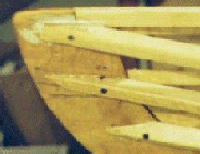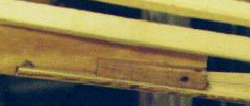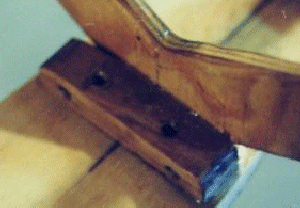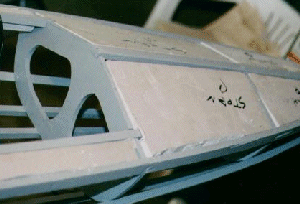


|
The place to get fussy.
The deck joint is made by setting the deck piece into a |
 |

 |
The floor to bow joint.
The floor joint is made by setting the floor piece into a |

| The floor to rib joint.
The floor is attached to the ribs by an oak block |
 |

 |
The Grandchildren's Boats.
The boats for my grandchildren have two inches of
The kids have never tipped a boat, but we all feel |

Generally I will assemble a boat with just the screws and let it set for a few days. Often
the ash longarons will stay just right, and I will then glue it up. But occasionally the wood
has a mind of it's own and will need to be replaced. It is not wasted, I simply rip it to
quarter inch and use it somewhere as trim.
Since these boats are so simple, and require so few tools they are ideal for introducing
novices to kayak building. Also by simply shifting the location of the ribs in reference to
the stern, the shape can be readily changed to meet the eye of the beholder. This gives
the new builder a sense that it is his or her unique boat. I have had the pleasure of
teaching six people how to build their kayaks since moving here. It is very pleasing to
watch, as they explain how they built them, to the other kayakers we meet on the
lakes and rivers.

